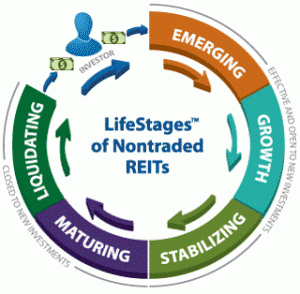Transparency & Liquidity in the Nontraded Space:
What’s Hot, What’s Not
Part three in our month-long blog series on REIT Share Classes.
July 20, 2016 | by Beth Glavosek | Blue Vault
In last week’s post, we talked about how nontraded REIT and BDC sponsors have introduced the T share in response to regulators’ requirements.
The T share addresses the past concern that clients’ account statements only reflected the share price paid, not any costs taken off the top. In addition to a better understanding of the impact of fees, T shares are expected to offer greater visibility into actual share values through more frequent valuations.
However, two other nontraded variants – the Daily NAV REIT and the interval fund – were also introduced over the past decade in an effort to address liquidity concerns. Where are they now?
As of December 31, 2015, Blue Vault noted that there were five nontraded REITs that provided daily valuations and enhanced liquidity features. These five Daily NAV REITs had raised an estimated $973 million since their inception – only 1.5% of equity raised from all active nontraded REITs as of December 31, 2015. Of the five, one announced its intention to liquidate.
So, in an era of investors asking for more visibility and transparency into share values, why haven’t these Daily NAV REITs raised more money?
Stacy Chitty, Managing Partner for Blue Vault, says, “It’s a complicated question with a multifaceted answer. Most advisors would rather continue to use the traditional  real estate play with less liquidity, if they still have that choice. To them, real estate investing is a 100% diversification strategy, and liquidity falls low on the priority spectrum because of that strategy. One can’t have both. In contrast, shares being valued every day and a structure that provides more liquidity has the opposite effect. There are advantages and disadvantages to both. And sometimes, it just takes time for people to learn and become comfortable with any new way of buying and selling.”
real estate play with less liquidity, if they still have that choice. To them, real estate investing is a 100% diversification strategy, and liquidity falls low on the priority spectrum because of that strategy. One can’t have both. In contrast, shares being valued every day and a structure that provides more liquidity has the opposite effect. There are advantages and disadvantages to both. And sometimes, it just takes time for people to learn and become comfortable with any new way of buying and selling.”
Interval funds have also been touted as a means of providing liquidity in nontraded investments. These funds provide a mix of institutional-quality real estate assets with public real estate securities. Investors have the option of redeeming a percentage of their shares at the end of each quarter, which provides some measure of liquidity.
Earlier this year, Kevin Gannon of industry research firm Robert A. Stanger & Co. predicted a renewed interest in Daily NAV and interval funds, in addition to T shares. He believes that, “Interval funds are here to stay.” In an in-depth look at interval funds, the Alternative & Direct Investment Securities Association (ADISA) also cited Stanger research in its Spring Alternative Investments Quarterly publication, concluding that with 22 active interval funds on the market and 13 in new registration, interval funds seem to only be gaining in popularity.
Product sponsor Resource Real Estate seems to agree. In a white paper on interval funds, the company supports the conclusion that they are leading to new ways for advisors and their clients to access alternative investments. By replicating the benefits of institutional real estate and offering a structure that allows adaptation to an evolving regulatory landscape, interval funds can open up alternatives to a wider audience of investors than ever before.
In conclusion, Jared Schneider, Managing Partner for Blue Vault, states, “It is certainly difficult to invest in illiquid assets like real estate, private credit, and private equity, and yet maintain liquidity for investors. I believe there will be a bifurcation in the market going forward. For one, a significant number of advisors and their clients will value liquidity over returns, and that is why Daily NAV and interval funds will flourish. On the other hand, some advisors and clients will appreciate the returns that come with sacrificing liquidity. The less liquid funds could come in the form of a similar structure to today’s nontraded REITs and BDCs or in the form of private placements.”


![201607_ABC-[Converted]](https://bluevaultpartners.com/wp-content/uploads/2016/07/201607_ABC-Converted-300x199.png)









